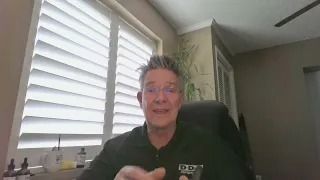Nonbanks are hiking conforming loan limits Two more lenders move to raise their conforming loan limits ahe
Nonbanks are hiking conforming loan limits
Two more lenders move to raise their conforming loan limits ahe
Earlier in the month, PennyMac Financial and United Wholesale Mortgage publicly announced that they are each raising their conforming loan ceilings by 14%, nearly two months ahead of the Federal Housing Finance Agency‘s official decree. They’re not the only ones getting a jump on new conforming loan limits.
Rocket Mortgage and Homepoint announced last week that they are also upping their conforming loan limit to $625,000 for a one-unit property.
According to a letter Homepoint sent to its mortgage broker partners last Thursday, the new loan limit – a $75,000 increase from the current maximum loan limit, as dictated by the FHFA– will go into effect this week.
Phil Shoemaker, president of originations at wholesaler Homepoint, noted that the Michigan-based lender decided to up its loan limit due to “the significant appreciation we’re seeing in home prices throughout the country.”
Shoemaker added, “We wanted to move quickly to support this market so that our mortgage broker partners can be at the forefront of providing greater housing affordability to borrowers in their communities.”
Keep Up With the Latest Third Party Origination News
Want to stay up to date with the latest on the third party origination front? We designed a specific news hub with lenders and brokers in mind, with Rocket Pro TPO leading the discussion.
Presented by: Rocket Pro TPO
Rocket Mortgage made the same announcement last week.
Bill Banfield, executive vice president of capital markets at Rocket Mortgage, said the loan limit that nonbanks seem to be coalescing around is in “recognition that home prices have been going up quite a bit.”
“We anticipate that the limit will come in at $625,000, but could be higher depending on the third quarter results,” he said.
Furthermore, PennyMac announced another change last week, hiking their conforming high balance loan limit to $937,500 in high-cost areas, up from a limit ranging between $724,500 and $822,375 for a one-unit property in select areas.
“We are pleased to support borrowers in 60 high-cost counties throughout the country by offering these expanded high balance limits through our national network of broker and correspondent partners,” said Kimberly Nichols, senior managing director of broker direct lending at PennyMac.
The FHFA is expected to announce the new conforming loan limit sometime in November. But for now, the 2021 baseline national conforming loan limit for a one-unit property is capped at $548,250.
Meanwhile, a former FHFA official told HousingWire that nonbanks are likely uniting around $625,000 because they have inside information from the agency.
“It would be hugely risky to announce that they were raising their conforming loan limit without having the enterprises to offload those loans to, they’d have no choice but to hold them in portfolio if say Fannie Mae didn’t raise its conforming loan limit to the new number,” he said.
And while nonbanks have been chatty about their intentions to up the loan limit, depositories have been silent on the matter. Wells Fargo, Chase and Flagstar Bank did not respond to requests for comment.
Start Your Loan
with DDA todayYour local Mortgage Broker
Mortgage Broker Largo See our Reviews
Looking for more details? Listen to our extended podcast!
Check out our other helpful videos to learn more about credit and residential mortgages.





